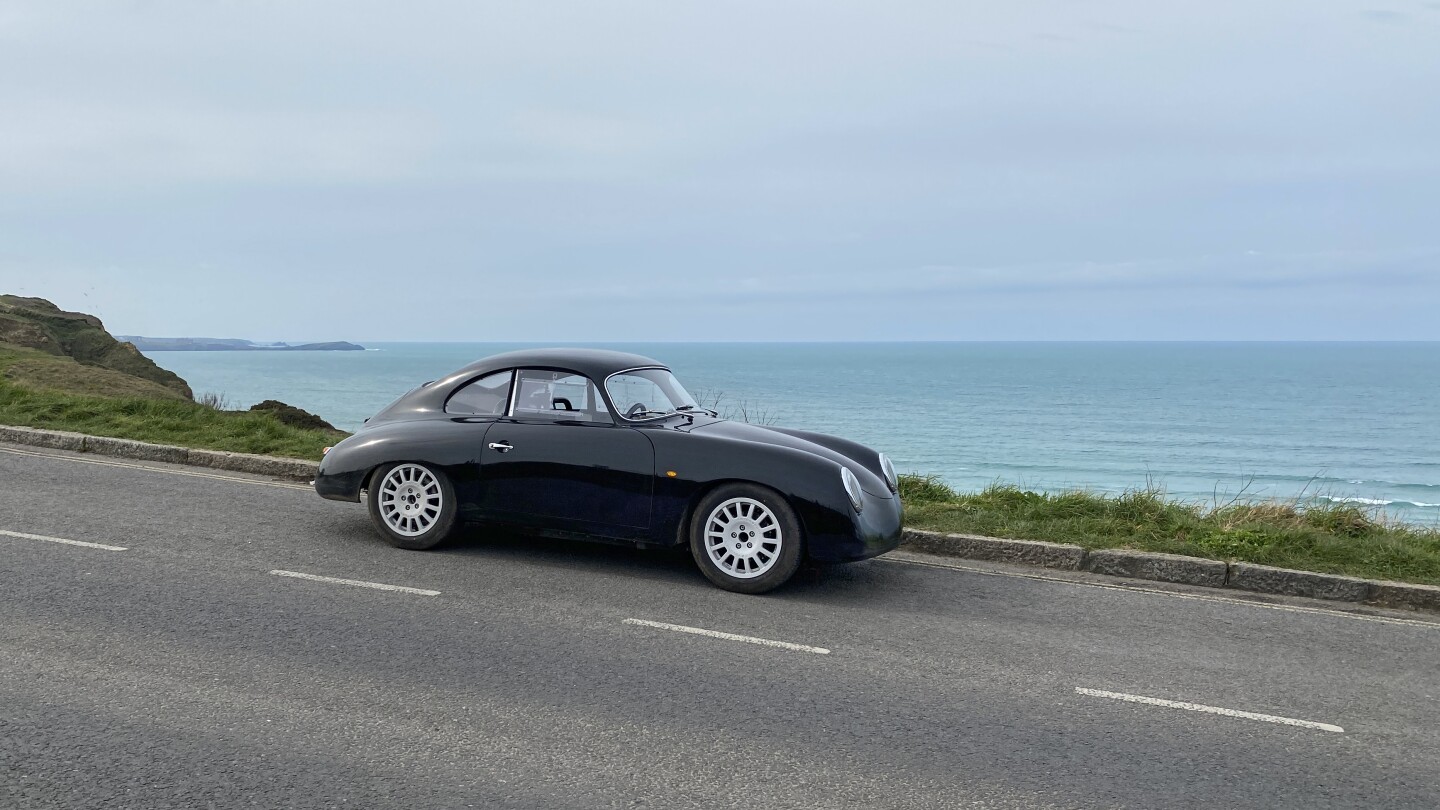It's become quite common for a tuner or EV startup to add a state-of-the-art electric drive to a classic sports car, 4x4 or saloon. But the UK's Watt Electric Vehicle Company doesn't take that well-worn road in announcing a light, nimble electric coupe that looks like a classic Porsche 356 A. Instead, it slides its skateboard chassis below a house-developed composite body styled after the 1956 Porsche. It calls it the WEVC Coupe and adds two seats, a rear electric motor drive and less than 1,000 kilograms of weight distributed evenly across the car.
While it's the Porsche-styled skin that will attract immediate attention, Watt is more excited about what's under that skin. The WEVC Coupe is the first vehicle underpinned by the company's Passenger And Commercial EV Skateboard (PACES) modular architecture.
Aimed specifically at cost-efficient low-volume manufacturing, the platform relies on lightweight aluminum extrusions that interlock and bond together to create a rigid structure, without the need for bespoke parts or expensive tooling. For the WEVC Coupe, Watt integrates the 40-kWh battery housing directly into the chassis rather than building it into its own dedicated case, saving weight while still building to European Small Series Type Approval crash standards.

Instead of dropping in two or four motors for the ever-popular e-AWD layout, Watt stays true to the original spirit of a mid-1950s sports coupe with a single-motor rear-wheel drive. Watt will ultimately offer two different powertrain output options, with the 21-model Launch Edition packing 161 hp (120 kW). Watt estimates a range of up to 230 miles (WLTP) and a 0-62 mph (100 km/h) just over five seconds.
None of those numbers really leap off the page, but we suspect the real beauty of the WEVC Coupe will be found behind the wheel. Watt promises a curb weight below 1,000 kg (2,200 lb), distributed at a near-perfect 50:50 front-rear ratio. With a bespoke double-wishbone suspension and tight turning radius, the WEVC Coupe promises to translate its electric horsepower into a lively, responsive ride for drivers who want to experience every square inch of road ahead.
"With our debut vehicle, we wanted to build a light, engaging sports car, at the opposite end of the spectrum from the current trend toward hugely powerful, fast-accelerating, but heavy electric supercars," explains WEVC founder Neil Yates. "The WEVC Coupe’s focus is on engaging the driver, providing enjoyment in real-world situations from city streets to B-roads. With double-wishbone suspension, 16-inch wheels and 60-profile tires, it has a comfortable ride, excellent steering response and a handling balance that is entertaining and exploitable, rather than chasing outright lateral grip."

As to the Porsche-356-A-styled composite body, it's closely inspired by the shape of the classic Porsche, complete with curved windshield, but with subtle differences aimed at accommodating the bespoke aluminum chassis and optimizing aerodynamics. Watt is careful to point out it has no affiliation with Porsche AG itself.
The WEVC Coupe interior lacks the touch-sensitive digital design that some EV startups feel is necessary for a debut electric sports car, keeping things minimalist and classic with a set of gauges, a three-spoke steering wheel, air vents, a smooth, sleek dashboard and not much else.

Watt has been prototype testing for the past 10 months, and plans to continue to refine the WEVC Coupe on the path toward a November production start at its Cornwall facility. Deliveries of the first £81,250 (approx. US$112,675) Launch Edition cars will begin in early 2022.
Source: Watts Electric Vehicle Company












